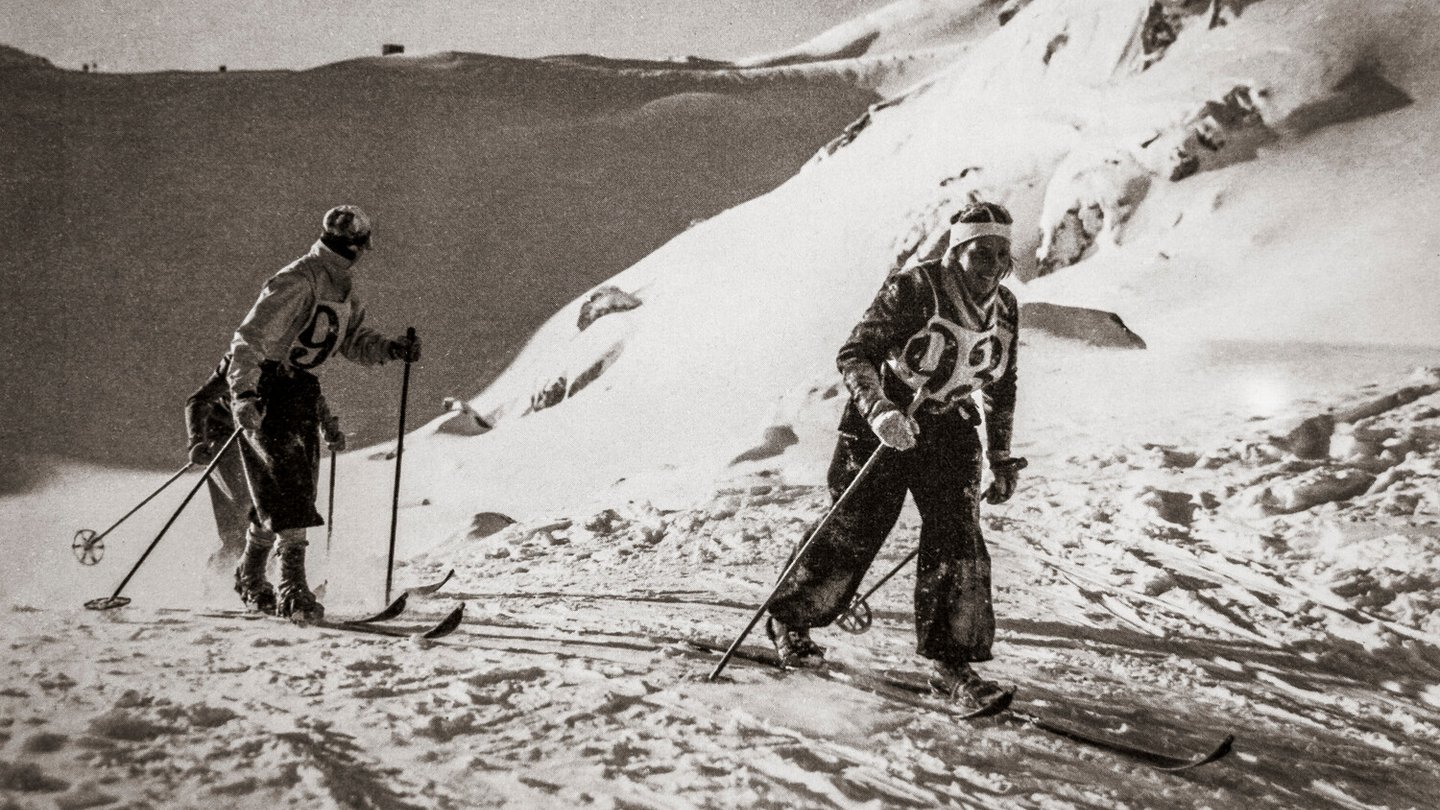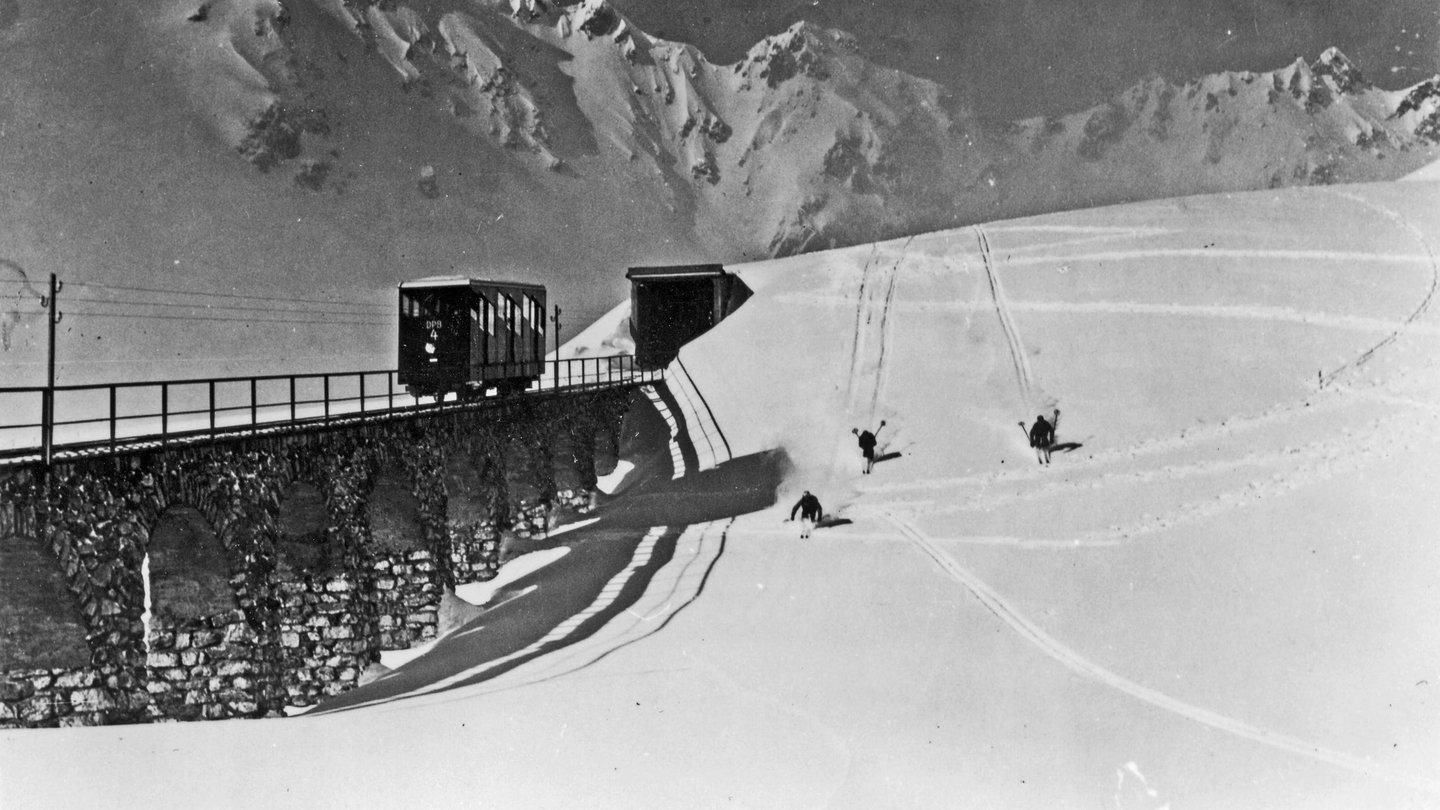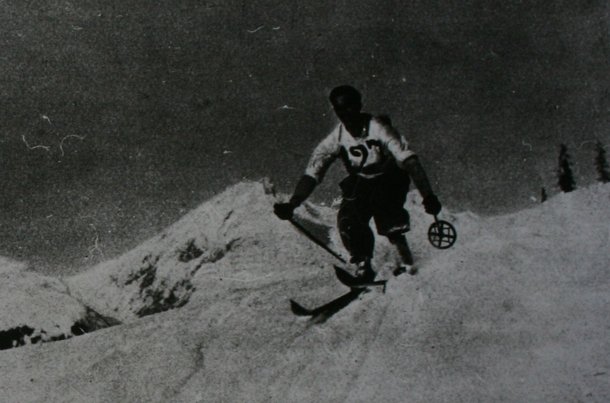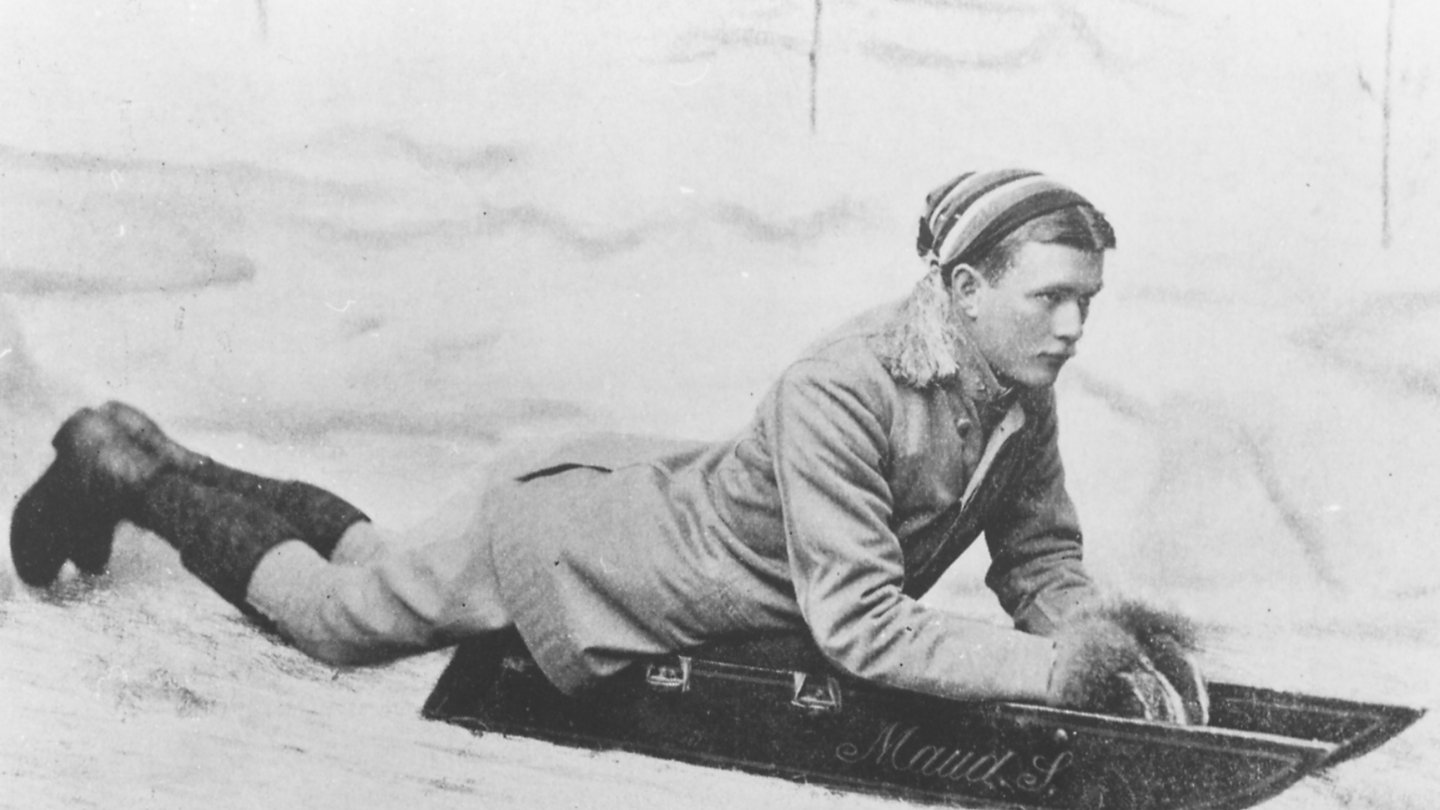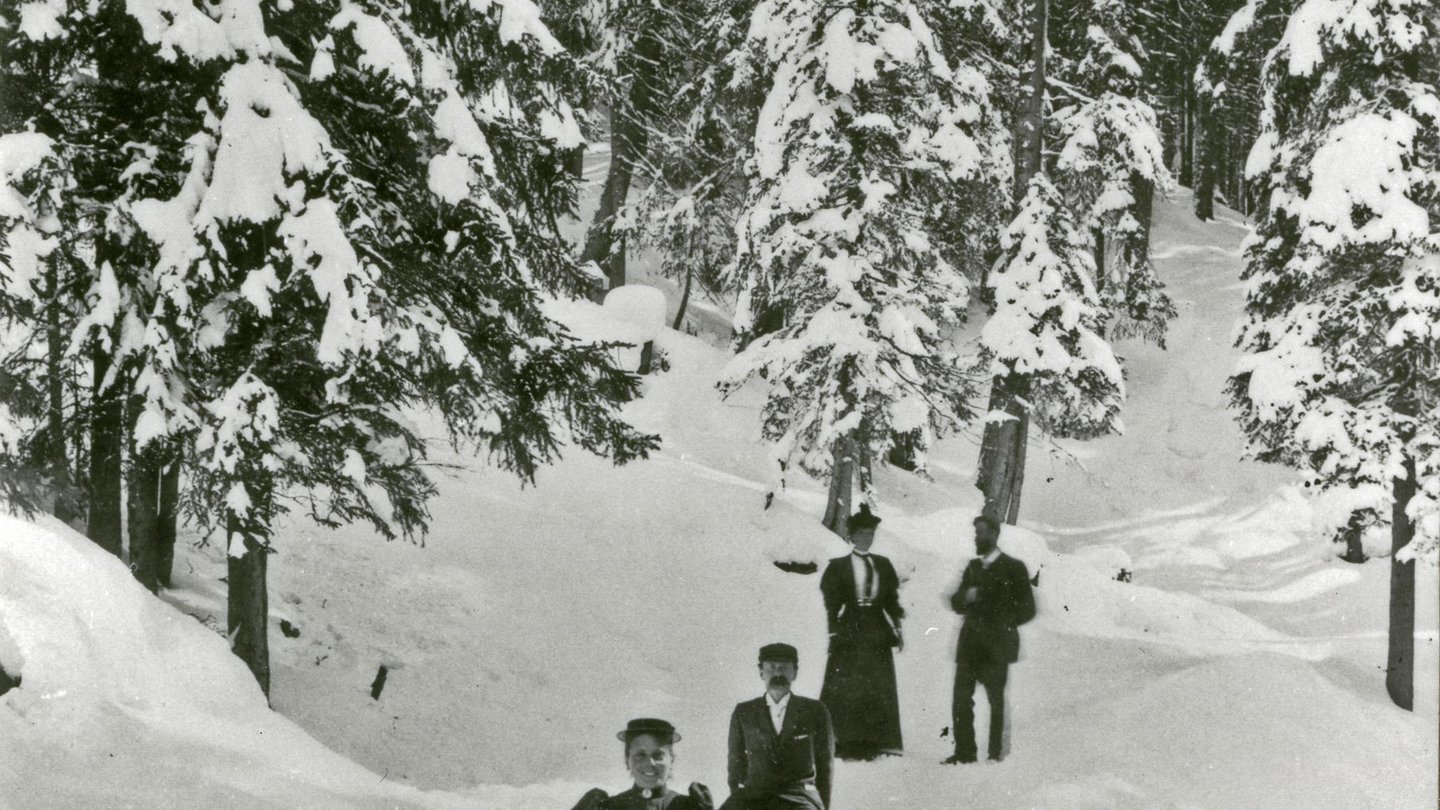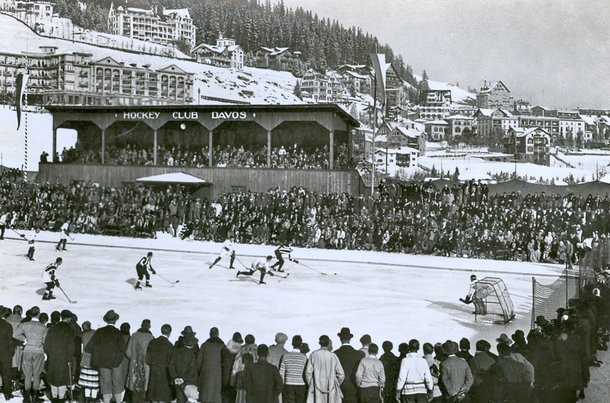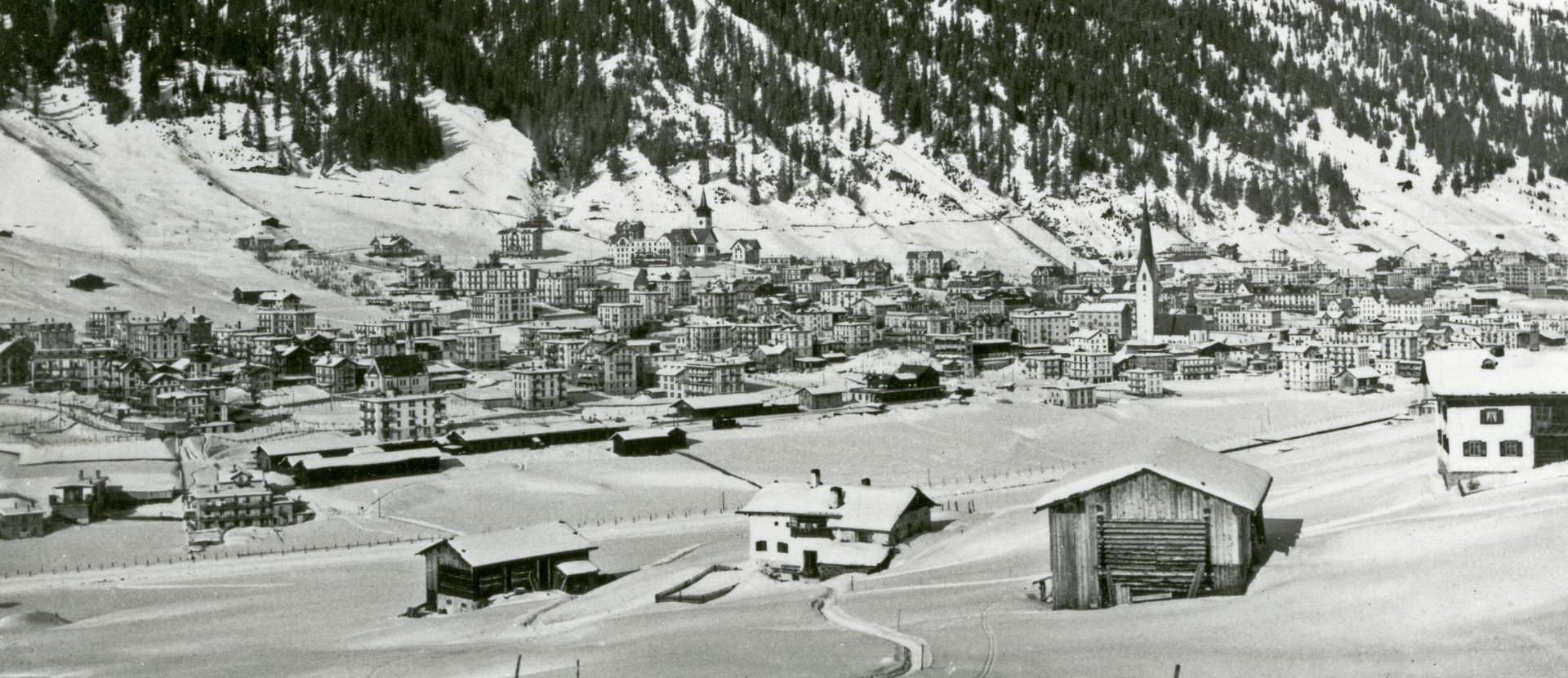
Davos - the pioneer
Winter tourism in the Alps
In step with the times for the past 150 years
Davos and neighbouring Klosters today make up one large, modern and popular holiday destination. The foundation for this success was put in place 150 years ago, when the first winter guests arrived in the Landwassertal valley on 8 February 1865. This date is considered to be the beginning of winter sport in Davos and is being celebrated during the 2014/15 winter.
Until 8 February 1865, Davos was known as a summer mountain health resort. On that day, Dr Friedrich Unger and Hugo Richter from Germany arrived in front of the town hall, both pinning their last hopes on the beneficial effect of the Davos Alpine air. Although rooms were available in the town hall – however unheated – both debilitated patients were taken by sleigh to the Hotel Strela, where there were four heated rooms.
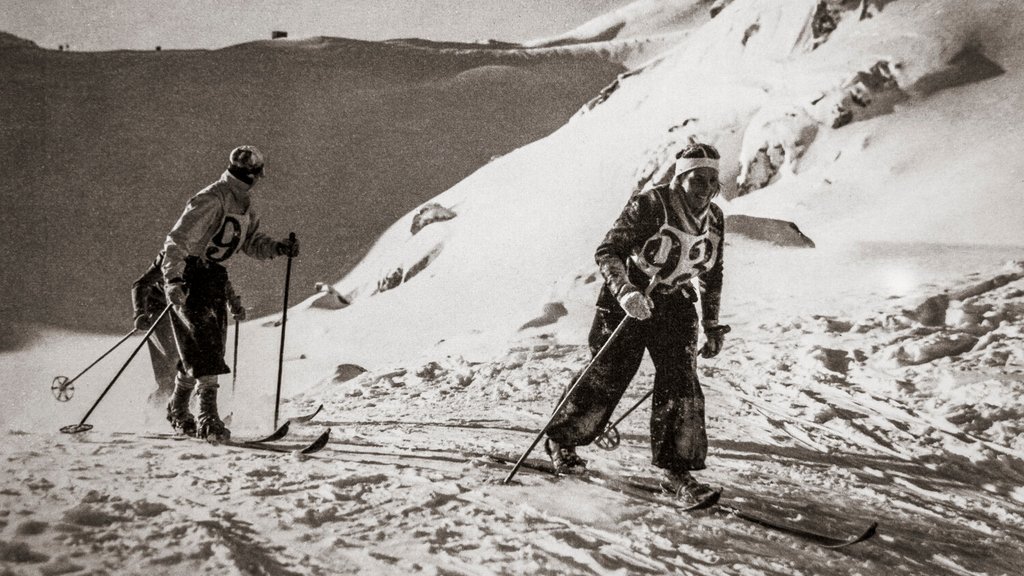
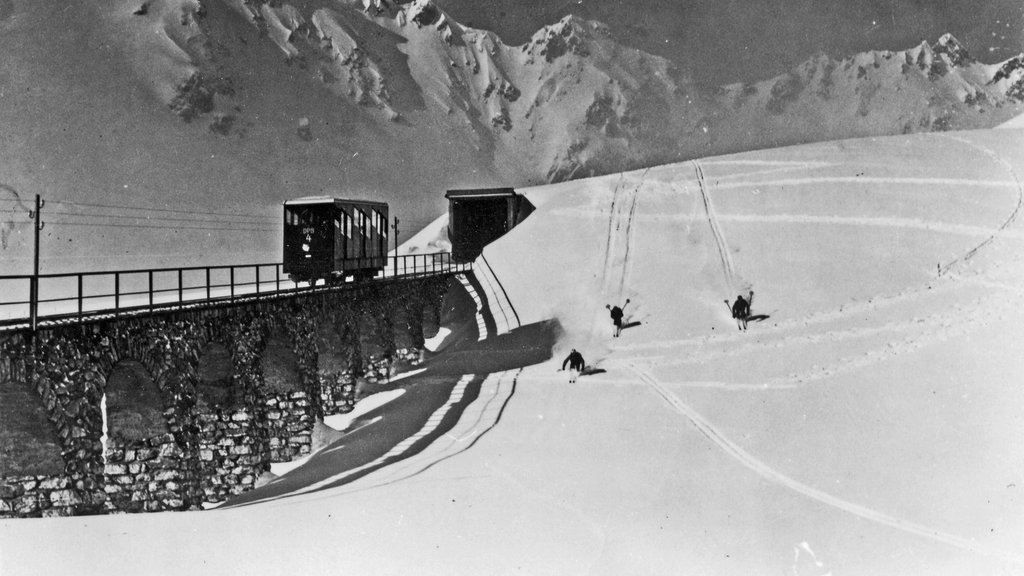
To the astonishment of local people, Unger and Richter immediately began a course of treatment on a bed made from a hay sled covered with boards. The treatment rapidly proved successful and both men felt able to return to work. It was not long before they were even seen skating on the Davos Lake. After his full recovery, Dr Friedrich Unger worked as a doctor in Davos for over 20 years. Hugo Richter married Magdalena Michel from Davos and took over management of the Strela Guest House, however he soon returned to his professional roots and on 1 January 1872 transferred his publishing business to Davos. From 1881, he printed the Davoser Blätter and Davoser Wochenblatt newspapers in his printing shop in Davos.
From the Beginning of Skis to Ski Destination
The first pair of Telemark skis from Norway arrived in Davos at Christmas 1883, a present to Wilhelm Paulcke – who later became a geologist and avalanche researcher – from his father. The new sports equipment was met with considerable enthusiasm and Davos wainwrights created new models based on the originals. In 1885, Heierling of Davos, a company that still exists, produced the first boots modelled on the Norwegian Lauper boot. Races soon took place on flat terrain. The first distance race over 12 kilometres ran through the Mattawald forest and was won by a Davos man with an Englishman and a Norwegian taking second and third place.
Doyle arouses the Brits’ enthusiasm for skiing
In 1889, local brothers Tobias and Johann Branger began teaching themselves to ski. They practiced in remote spots, sometimes after dark, to avoid being ridiculed by their fellow villagers. As early as 1890, they ventured a tour on Strelaalp and in 1893 managed to make their way from Davos over the Maienfelder Furka Pass to Arosa and back. Sir Arthur Canon Doyle accompanied them when they repeated the tour in 1894. The humorous and ironic report – on how he tore his trousers - that the writer published in the Alpine Journal met with a resounding response in Britain. This was the foundation stone of the British enthusiasm for skiing, which continues to this very day.
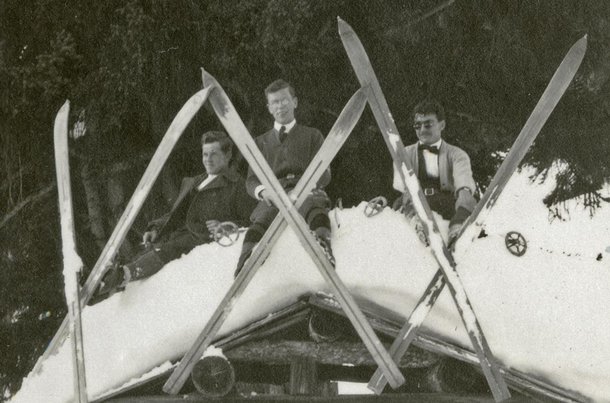
A coincidence creates the classic downhill run to Küblis
In 1895, four British ski tourists attempted to repeat the tour made by the Branger brothers. Their minimal knowledge of the area led them to a freezing ski hut, where they spent a very uncomfortable night. On the following day, after a long descent through a forest they reached the longed-for village, which turned out to be Küblis not Arosa. This coincidence is legendary and an Alpine myth was born. Today, snow-sport fans look on this 12km-long downhill run as both a highlight and a challenge. In 1924, the first Parsenn Derby was held on this stretch. It was one of the first downhill ski races in Switzerland and is the oldest all-comers race in the country.
Home of the Davos Sledge
Sledging was the only form of sport practiced by local people in earlier times, however purely as a leisure activity. In 1883, English writer and cultural historian John Addington Symonds launched the world’s first international sledge race from Davos Wolfgang to the monastery. The race was then repeated annually as the Symonds Shield. It took place on sledges made in Davos and the Davos sledge is still prized and used worldwide. The sledge run from Schatzalp to Davos Platz was built in 1900. The bobsleigh races which followed developed into the bobsled sport, introduced in Switzerland by pioneering Davos. In 1888 the Symonds Shield was won by American L. P. Child in a lying position and head first. This event is regarded as the birth of the skeleton race.
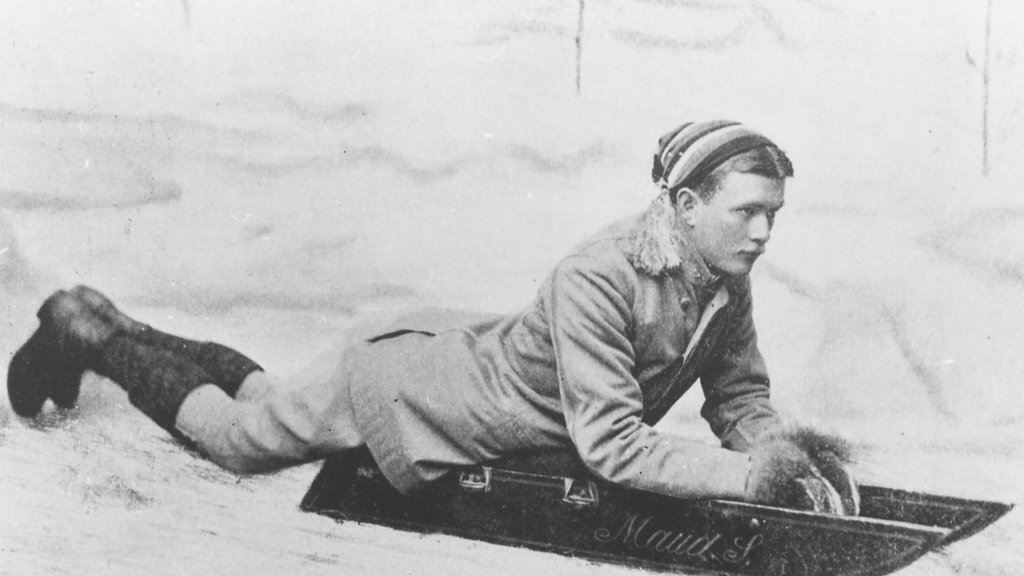
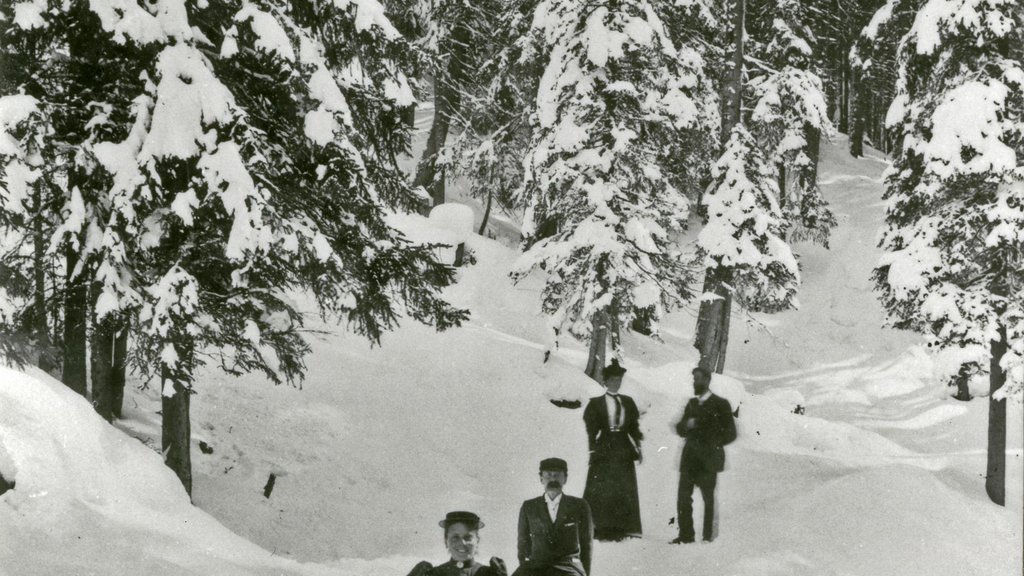
Driving was done on sledge constructed in Davos - the Davos sledge is still appreciated and used worldwide. In 1900 the sledge run from Schatzalp to Davos Platz was built. The later Bobsleigh races developed into the sport of bobsleighing, which was introduced in Switzerland at the pioneer location of Davos. The American L. P. Child won the "Symond-Shield" in 1888 in a lying position and head first. This event is considered the birth of the skeleton.
Even though there are no races in Davos today, sledding has gained in importance as a popular sport and there are nine toboggan runs to choose from in Davos Klosters. The classic, the three-kilometer run from Schatzalp to Davos Platz, which is largely the same as the one in 1900, has lost none of its fascination to this day.
Tradition on Davos Ice
The same as Unger and Richter, winter guests also enjoyed ice sport very early on. When frozen, Davos Lake has been used for ice skating since the mid-1860s. The first man-made ice rink was created in the Kurhaus garden (today’s Arkadenplatz) in 1869. Only two years later it could no longer meet the growing demand. A 500m² area of ice was created on land owned by Willem Jan Holsboer – father of the Rhaetian Railway. In the 1880/81 winter season a 6,500m² skating rink was opened at the location of today’s natural ice rink. In winter 1892/93, a 16,000m² area of ice was opened to ice skaters.
HC Davos and Spengler Cup
The Ice Hockey Club Davos (HCD) was founded in 1921. The first Spengler Cup tournament took place only two years later. Dr Carl Spengler donated the trophy to further understanding among nations after the First World War. The Spengler Cup developed into an international team tournament in which various clubs with impressive names took part and still take part today. Today the tournament attracts great attention including in Canada – the birthplace of ice hockey. HCD won the Spengler Cup for the first time in 1929, the last time in 2011. HCD has had and enjoys success in the Swiss championships. The club celebrated its first championship title in 1926 and won its 30th in the 2010/11 season under the leadership of charismatic trainer Arno del Curto.
Curling in Davos - since 1888
The first curling attempts were probably made as early as 1872. The first recorded curling season took place in the winter of 1888. The Belvédère Curling Club was formed in 1892. Its first president was British General R. M. Haig, a respected member of the British colony in Davos. In 1898, the Belvédère CC was renamed the Davos Curling Club. It was made up exclusively of British, predominantly Scottish, guests. The first curling club for local people, the CC Strela, was founded in 1931 and from 1940 called itself the Davos Village Curling Club. Another club formed in 1942 merged with the Davos Village CC in 1945. In 1952, the 10th Swiss Curling Championships were held in Davos. In January 1988, an anniversary tournament was held to celebrate the centenary of curling in Davos.
Set up a contact for our phone number
+41 81 415 21 88
Write your question directly via WhatsApp.
Please note: we respond to your questions during opening hours of the tourist office .


